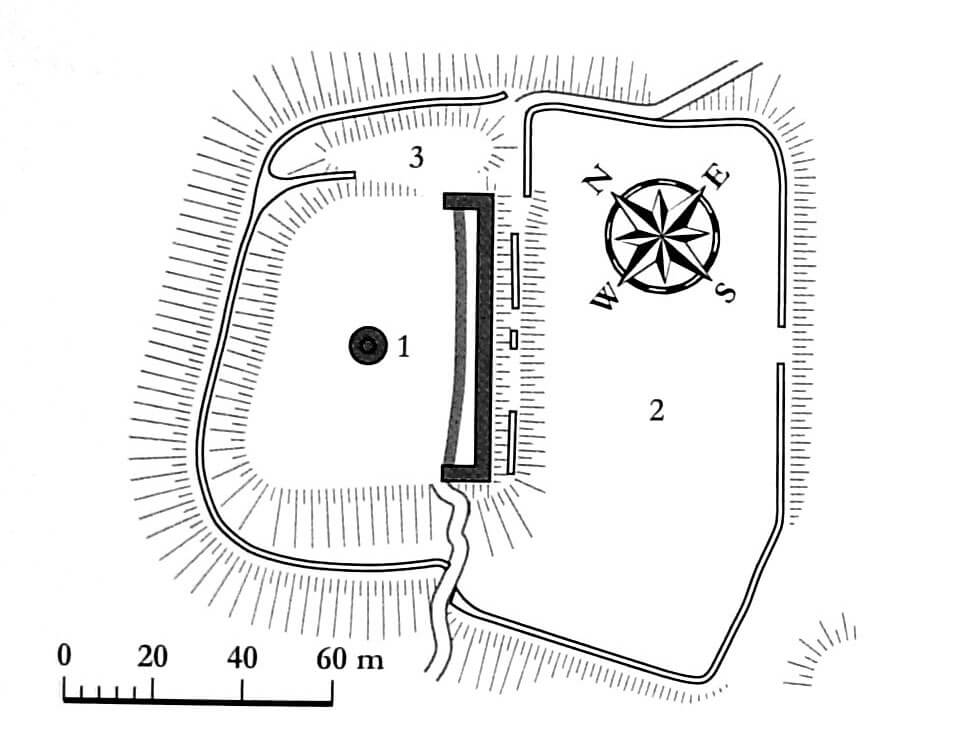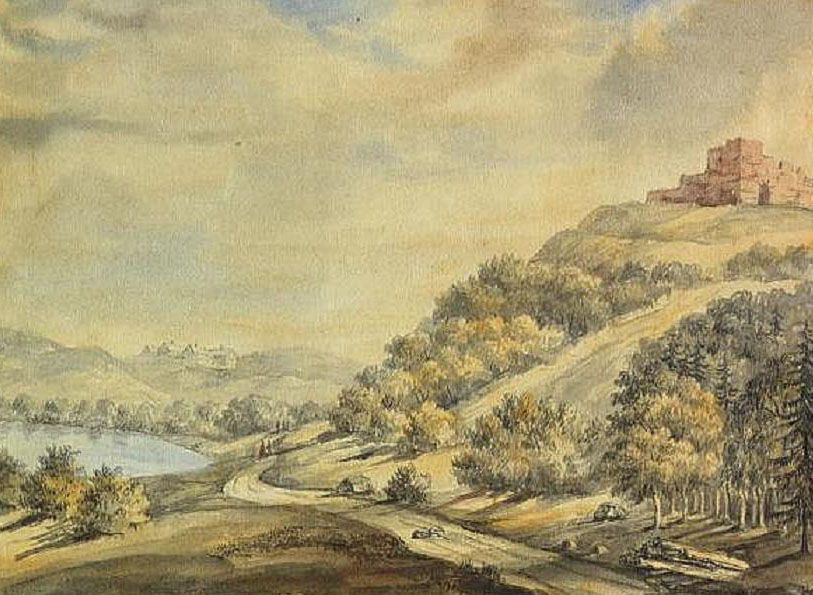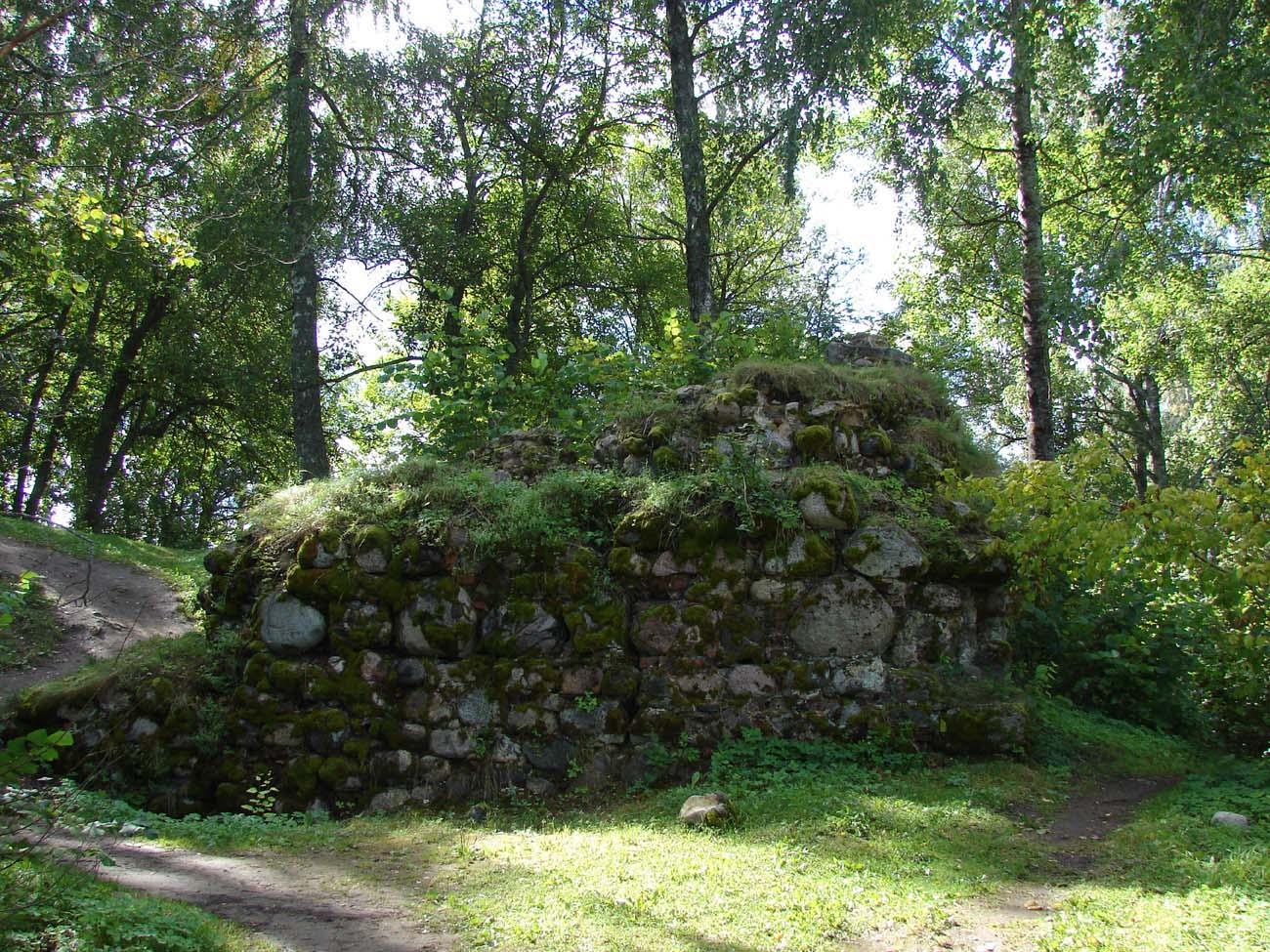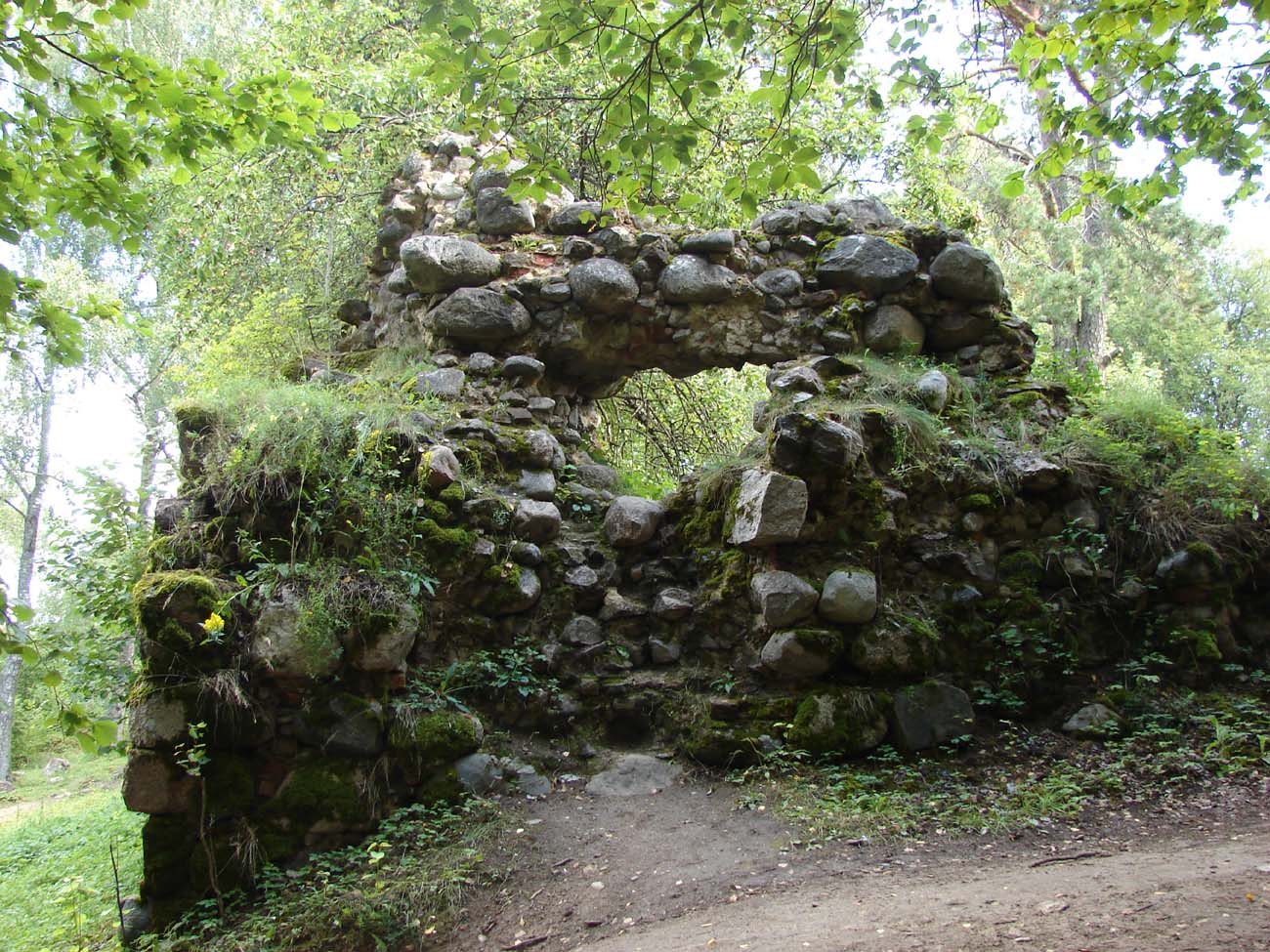History
For the first time, the castle was recorded in historical sources as the seat of a Teutonic commandry, managed by commander Dietrich in 1263. Its erection could have taken place around the mid-13th century or even in the fourth decade of the first half of that century. Wolkenburg was certainly the oldest Teutonic stronghold in the Latgale region. Despite promising beginnings, the castle was not expanded, and the commandry was moved in 1277 to the Teutonic castle in Dünaburg. From that moment on, Wolkenburg was rarely recorded. Documents from 1347 and 1350 would indicate that it was still inhabited at that time and may have played a role in the armed campaign against Lithuania in the 1330s. It was probably abandoned before the fall of the Teutonic Order in Livonia in 1561. In 1599, there was mention of an estate with an old castle, which would indicate that it had not functioned for a long time.
Architecture
The castle was situated on the top of a high hill, considering the Latvian terrain conditions, shaped alone by nature among large forests. The slopes of the hill were the highest and steepest from the south and east, i.e. in the place where the trail probably ran at the foot of the hill. In the north-west, the slope sloped gently and evenly, so there had to be an access road to the castle.
Initially, Wolkenburg’s fortifications were made of wood and earth, only after some time a single section of stone shield wall was built, protecting from the front the main castle courtyard in a shape similar to a rectangle. The wall was very massive, up to 3.5 meters thick, and its length was about 62 meters. In the north-east and south-west corners, the wall bent at a right angle and ran a few meters further, to places where the slopes were steep enough that a palisade was sufficient to protect the castle. The residential and economic buildings of the castle were certainly of wood or half-timbered, placed in the courtyard around the centrally located well.
The core of the castle from the north-west was protected by a palisade surrounding the outer bailey. Probably a second small bailey was built on the south side, or it was possibly a kind of foregate in front of the main part of the castle. Both main parts of the complex, the upper ward and the outer bailey, were separated by a ditch, which, together with the earth ramparts, also covered the outer bailey itself. Wolkenburg was an early, very simple variant of the Teutonic castle, which was never expanded to a more impressive form.
Current state
The stone remains of the castle are only fragment of the defensive wall visible today on the hill, approximately 3-4 meters high. Its characteristic feature are the lower parts, made of very large stones up to one meter in diameter. The monument is located far from larger settlements, on a rural gravel road connecting the town of Lipuški and the village of Rukmoni, from which it is best to turn west towards Voveri and then climb the path to the castle hill.
bibliography:
Borowski T., Miasta, zamki i klasztory. Inflanty, Warszawa 2010.
Herrmann C., Burgen in Livland, Petersberg 2023.
Tuulse A., Die Burgen in Estland und Lettland, Dorpat 1942.





